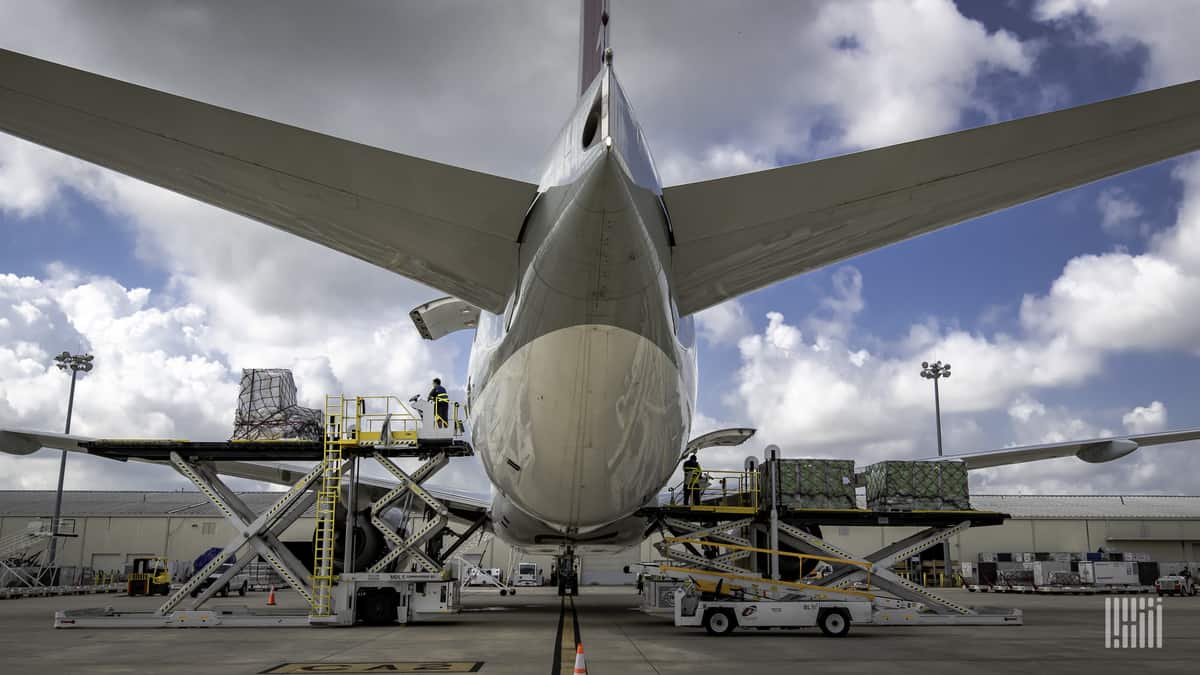(Updated Aug. 17, 9:30 A.M. EST with information from The TAC Index.)
The air cargo market is building up pricing momentum towards the fourth quarter, putting all-cargo carriers and airlines with cargo-only passenger freighters in a strong position relative to shippers.
Freight rates have climbed since early July with the slow return of international passenger capacity combined with consistent growth in cargo shipments as the global economy, notably in China, continues to recover from coronavirus.
Export demand to the U.S. is very high, as is traffic from Shanghai and Singapore to Europe, according to freight data aggregators and logistics companies. Overall, rates from Asia to North America and Erurope are rising.
Rates from China to the U.S. tapered off a week ago, but are still about 85% higher than the same period in 2019. Shipping from Hong Kong to the U.S. is 75% more expensive than a year ago, according the The Air Freight Index Co., which benchmarks prices using anonymous data supplied by global air forwarders. On the transatlantic lane, rates are down from their spring peak, but remain 150% above last year’s level outbound to the U.S. and 80% more for U.S. to Europe.
Flexport, a freight forwarder with a digital platform built from scratch for the Internet, said in a customer bulletin that capacity in the eastbound transpacific lane is extremely tight and warned that most carriers will initiate a 20% to 25% general rate increase this week. The spread between outbound Asia-to-North America rates and mainland China-to-North America is now almost $2 per kilogram, it said.
Drivers of airfreight demand are growing e-commerce sales from people avoiding retail stores during the coronavirus pandemic and elevated need for medical supplies as the virus rapidly spreads across large areas of the U.S. Online sales in the U.S. increased 25% in July and surveys show many parents plan to buy electronic devices to enable distance learning.
More than 40% of those surveyed by Cowen investment bank said they planned to spend more online even though 84% of retail stores are open compared to only 43% in mid-April.
Ontario International Airport, located in California’s Inland Empire, attributed five consecutive months of 20% or more growth in cargo tonnage to the surge in online orders. In July, commercial freight totaled more than 79,400 tons, an increase of 26.9% year-over-year. During the first seven months of the year, Ontario processed more than 500,000 tons of air freight, 21.2% more than the same period in 2019. Many cargo-oriented airports in secondary metro areas are experiencing strong cargo growth.
More broadly U.S. retail sales increased 2.7% in July compared to 2019 and 1.2% over June, the Commerce Department reported. It was the third straight month of sales growth, but economists worry lower-income individuals will spend less moving forward now that government stimulus for the unemployed has expired. That could put a dent in retail sales, including online ones.
Airfreight rates from Asia are poised to go up more when tech giants such as Apple, Samsugn and Sony drop new products this fall and commandeer all-cargo planes to rush them to market.
Meanwhile, westbound from Asia-to-Europe remains volatile, with capacity and demand ebbing and flowing, but rates are generally on the rise in this trade lane, Flexport reports.
The transatlantic market outbound from Europe is relatively stable, with production output lower because Europe is in the midst of peak vacation season, according to the logistics provider.
A country where the capacity situation should improve somewhat is Pakistan, which is fully resuming international passenger flights today.
Click here for more stories by Eric Kulisch. / Contact: [email protected] / Twitter: @ericreports
RECOMMENDED READING:
How Air Canada beat US airlines removing seats for cargo
Cathay Pacific renews emphasis on cargo with leadership changes
Exclusive: Largest airline trade association to reduce workforce 20%










